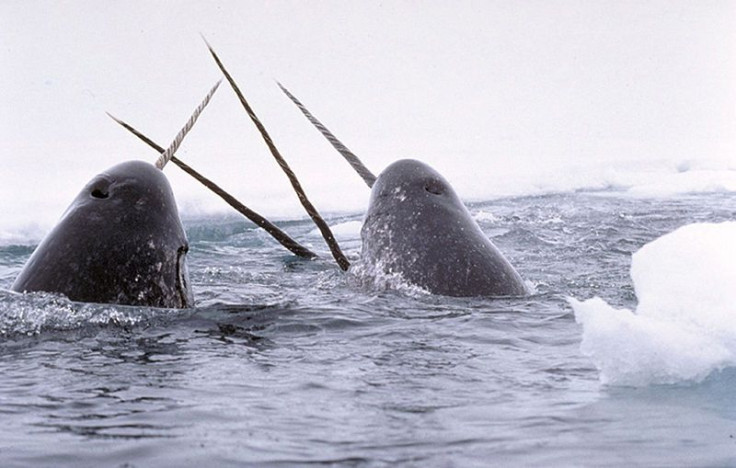What Narwhals Sound Like: Researchers Capture Vocalizations Of ‘Arctic Unicorns’

KEY POINTS
- Observations of narwhals are rare because of their skittish nature
- Researchers captured rare recordings of the sounds that narwhals make
- The study provides evidence that narwhals forage in the summer time
Researchers recently captured rare recordings of what narwhals sound like, thus giving a glimpse of the unique creatures' lives.
Narwhals are perhaps some of the more mysterious members of the animal kingdom. With their long horns jutting from their heads, narwhals look rather like a cross between whales and unicorns.
While studying the sounds of melting glaciers in Greenland fjords, where narwhals tend to summer, geophysicist Evgeny Podolskiy of Hokkaido University saw the chance to study the elusive creatures.
"I realized working in the area and not paying attention to the elephant in the room — the key endemic legendary Arctic unicorn just flowing around our glacier — was a big mistake," Podolskiy said in a press release from American Geophysical Union.
The problem is that narwhals are rather difficult to study because they are shy and spend majority of their time in the deep waters of the Arctic ocean. However, even if scientists tend to have a difficult time in studying them, Inuit hunters are able to get close to the creatures.
The researchers managed to tag along on several Inuit hunting expeditions and placed underwater microphones to record the sounds in the fjord. Through this method, they were able to collect hours of hydroacoustic records that also captured narwhal sounds, from social calls to clicking and whistles for echolocation. According to the researchers, the narwhals tend to click faster when they get closer to their food, something that helps them pinpoint the location of their food.
Although narwhals are considered to be one of the most vulnerable Arctic species due to climate change, there are not a lot of studies about them. The results of the study now added to evidence that narwhals forage in the summertime, contrary to some previous findings, and showed they actually come rather close to glacier calving fronts even if such places can be rather noisy and dangerous.
"There is so much cracking due to ice fracturing and bubbles melting out… it’s like a fizzy drink underwater," Podolskiy said. "It seems we are dealing with animals living in one of the most noisy environments without having much trouble with that."
According to the researchers, the results of the study provided a baseline for further acoustic monitoring in the remote areas in Greenland, but some ethical considerations have to be made. For instance, the Inuit hunters asked to listen to the narwhal recordings.
"Such a simple piece of information can accelerate the hunting effort and the decision to wait or continue to another spot," the researchers wrote. "Therefore, the extent to which hydroacoustic technology should be allowed to enhance hunting practices must be carefully considered."
© Copyright IBTimes 2025. All rights reserved.





















